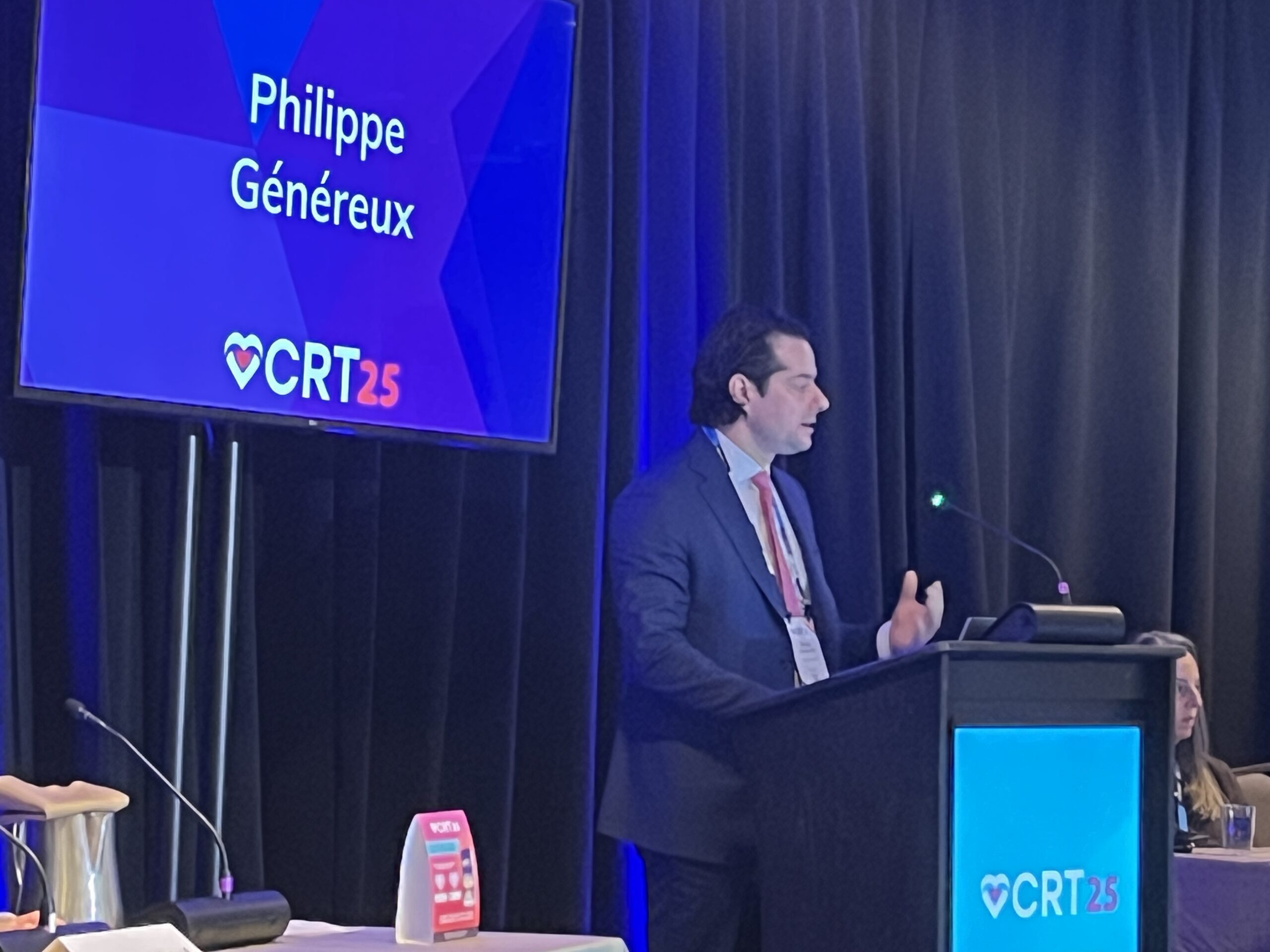
Results of the Altavalve early feasibility study (EFS) evaluating outcomes of the AltaValve (4C Medical) sub-valvular transcatheter mitral valve replacement (TMVR) system have demonstrated sustained clinical benefits out to six months among high surgical risk patients treated for symptomatic severe mitral regurgitation (MR), with the haemodynamic performance of the valve maintained out to this timepoint.
These were among the conclusions presented by Philippe Généreux (Morristown Medical Center, Morristown, USA) at the 2025 Cardiovascular Research Technologies (CRT) meeting (8–11 March, Washington DC, USA) where he presented the study’s six-month findings.
Left ventricular outflow tract (LVOT) obstruction is a common limitation of existing TMVR technologies, Généreux explained in his presentation, leading to high rates of screen failure for patients enrolled in TMVR trials. Altavalve features an atrial fixation system and is designed to treat a broad population of mitral regurgitation (MR) patients and minimise the risk of LVOT obstruction.
The device is a transseptal TMVR system whereby the prosthetic valve is positioned above the native mitral valve via an atrial-only fixation that is intended to ensure that cardiac structures are retained within the left ventricle. The AltaValve is also designed in a way that allows future left atrial access for other procedures.
A total of 30 patients were enrolled in the trial at sites in the USA and Europe, 13 receiving the device transapically, before investigators switched to transseptal delivery for the remaining 17 cases. Patients had an average age of 77 years, and 63% were female. There was an even split of patients with functional mitral regurgitation (MR) or degenerative or mixed MR, whilst 16% of patients had moderate or severe mitral annular calcification (MAC).
“Procedures went well in general,” Généreux said of the procedural characteristics of the trial, noting that there were no incidences of mortality or major bleeding during the implantation of the device. Use of Altavalve resulted in a significant improvement in New York Heart Association (NYHA) class, Généreux reported, alongside a significant reduction of FMR that was consistent through to six months.
Turning to clinical outcomes, Généreux noted that four mortalities were reported at the six-month timepoint, with three of these coming in the transapical patient cohort. Heart failure hospitalisation occurred in 14% of patients, though no pacemakers or valve reinterventions were observed, as well as no new onset atrial fibrillation (AF).
On the haemodynamic performance, Généreux reported that the mitral valve gradient stood at an average of 3.7mmHg at six months, with LVOT gradients at 2.1mmHg. Left ventricular ejection fraction (LVEF) was preserved at 53%.
Patients also reported feeling better over time, with improvements in Kansas City Cardiomyopathy Questionnaire (KCCQ) scores from 55 to 68, and longer distance recorded on six-minute walk testing.
“I strongly believe AltaValve has a unique proposition for those patients that are actually in need of a new solution,” said Généreux in summing up the findings of the study. “Where the device may win is the ease of use, with a fully recapturable prosthesis. We saw a great sustained benefit at six months with this prosthesis.”
Further study of the device is ongoing, and enrolment has begun in the ATLAS pivotal study at European and US sites. ATLAS will include a mitral annular calicification (MAC) cohort of 100 patients, as well as a primary cohort of up to 350 patients.













